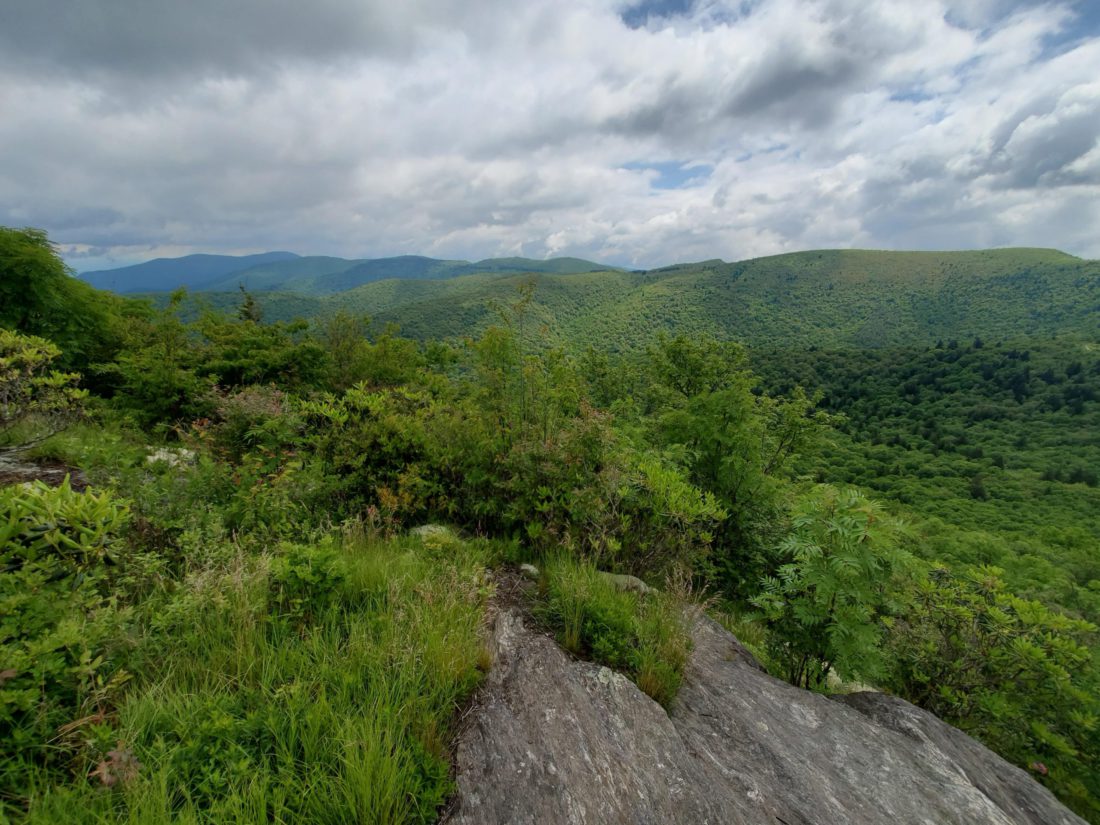By Jack Igelman, originally published by Carolina Public Press. Carolina Public Press is an independent, in-depth and investigative nonprofit news service for North Carolina.
After nearly a decade, the Pisgah-Nantahala National Forest Plan, which will set 20-year policies focused on managing over 1 million acres within the two forests, is nearing completion.
James Melonas, supervisor of National Forests in North Carolina, said the agency is in the final stages of the plan development, which may take several months.
The forest planning process launched in late 2012. New federal forest planning rules and other federal regulations guide the process and were intended to span a three- to five-year period.
However, navigating the new rules amid substantial public participation and the pandemic has prolonged the planning process. In February 2020, the U.S. Forest Service released a proposed land management plan with four alternatives, each with a slightly different set of conditions.
“Right now, we are coordinating with other agencies and finalizing some of the analysis based on public comments” received following the release of the draft plan, he said.
As the work to finalize the plan continues, collaborative groups and organizations throughout Western North Carolina with a stake in the management of public forests are shaping projects within national forest boundaries, promising expanded recreational opportunities and restored forest habitats and landscapes.
Expanding projects
The function of the plan is to provide a blueprint for the overarching strategy and goals for the future of the forest, U.S. Forest Service planner Michelle Aldridge said, however, it’s on the project level where the agency executes specific actions.
For example, improving wildlife habitat, expanding sustainable recreation opportunities and promoting shared stewardship are priorities within the proposed plan. Specific projects identify the place and the tools and actions that will be used, such as prescribed fire, timber harvesting or stream restoration. Projects also depend on forming partnerships with private organizations.
Each project is proposed, analyzed and carried out within the framework of the forest plan.
While each project must be consistent with the forest plan, she said, projects happening now are being developed with a lens toward the tenets of the revised plan.
Josh Kelly, a biologist at MountainTrue and member of the Nantahala-Pisgah Forest Partnership, said that “doing actual work on the ground is the next step” for many of the organizations who have been immersed in the planning process.
“[The planning process] was long and difficult, but we want to work on making the plan’s vision a reality,” Kelly said.
The partnership was formed in 2014 to develop a collaborative group from a range of national forest stakeholders, including local governments, conservation organizations and the forest product industry, among others, to influence the development of the management plan.
Within the last year, Kelly said, a subcommittee was formed to examine future and current habitat and forest restoration projects, such as the controversial Crossover Project in Nantahala National Forest.
The project proposed 1,378 acres of “commercial regeneration treatments” in Graham and Cherokee counties designed to improve or maintain the health of the forest ecosystem.
The project will include timber harvesting, temporary road construction, watershed improvement, prescribed burning and wildlife habitat improvement.
It was a “stress test” for the commitment of the partnership, Kelly said.
“It was a scary moment when Crossover came out because I wasn’t sure if we would stick together through a project that looked favorable to some interests and so damaging to others,” he said.
While most agree that forest restoration is needed throughout Pisgah and Nantahala national forests, some of the areas proposed were in high-value conservation areas, such as old-growth forest stands and exceptional natural heritage areas, and places the partnership agreed to manage as backcountry.
A letter from the partnership to the Forest Service advised removing 335 acres of timber harvest to reduce the potential for conflict over the project. A decision by the Forest Service on the project is forthcoming.
Among the signers of the letter was forester Orrin Goure of Columbia Forest Products and a member of the partnership’s leadership team.
Goure said some Forest Service projects developed in the past are not economically viable for timber companies due to costs of extraction or the value of the lumber.
He envisions the partnership will support the Forest Service in developing future projects that maximize benefits and moderate contention. From his point of view, removing controversial areas will allow projects to move faster.
During the plan revision process, Goure said that the partnership identified 61,000 acres suitable for consideration for timber extraction in Nantahala and Pisgah national forests.
“Engaging stakeholders is what needs to happen to have projects that are supported and are not causing controversy,” he said. “[The timber products industry] recognizes that everyone in their own silos and not communicating isn’t a practical way of managing public lands.”




Before you comment
The comments section is here to provide a platform for civil dialogue on the issues we face together as a local community. Xpress is committed to offering this platform for all voices, but when the tone of the discussion gets nasty or strays off topic, we believe many people choose not to participate. Xpress editors are determined to moderate comments to ensure a constructive interchange is maintained. All comments judged not to be in keeping with the spirit of civil discourse will be removed and repeat violators will be banned. See here for our terms of service. Thank you for being part of this effort to promote respectful discussion.